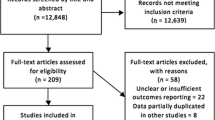Abstract
Background
In 1999, the Society of American Gastrointestinal and Endoscopic Surgeons (SAGES) introduced the SAGES Outcomes Initiative as a method for its members to use for tracking their own outcomes. This report provides a descriptive analysis of the cholecystectomy database.
Methods
The SAGES Outcome Initiative database was accessed for all gallbladder cases from September 1999 to February 2005. The data from the preoperative, intraoperative, and postoperative entries were summarized. These data are purely descriptive, and no statistical analysis was performed.
Results
The gallbladder registry contained 3,285 cases, with 2,005 follow-up cases. Most patients were employed women with some comorbidities who had elective surgery under general anesthesia. Most of the operating surgeons were attending surgeons and surgical assistants. Most of the patients had biliary colic, and symptoms were improved for more than 95% of the patients. More than 90% of the cases were managed laparoscopically, with a conversion rate of 3%. Biliary imaging was used in the vast majority of cases, with most shown to be normal. Intraoperative gallbladder perforation was common, with bile duct injury occurring in 0.25% of cases. The most frequently cited postoperative event was wound infection, with most complications classified as class 1. More than 95% of the patients were able to return to work.
Conclusions
The SAGES Outcomes Initiative database demonstrates that most participating SAGES members perform laparoscopic cholecystectomies themselves using intraoperative cholangiograms. Adverse outcomes are few, with most patients able to return to normal activity. Importantly, there were relatively few missing data points, implying that when surgeons enter data, the information is relatively complete.





Similar content being viewed by others
References
Brunt LM, Quasebarth MA, Dunnegan DL, Soper NJ (2001) Outcomes analysis of laparoscopic cholecystectomy in the extreme elderly. Surg Endosc 15: 700–705
Clavien PA, Sanabria JR, Strasberg SM (1992) Proposed classification of complications of surgery with examples of utility in cholecystectomy. Surgery 111: 518–526
Flum DR, Cheadle A, Prela C, Dellinger EP, Chan L (2003) Bile duct injury during cholecystectomy and survival in Medicare beneficiaries. JAMA 290: 2168–2173
Flum DR, Flowers C, Veenstra DL (2003) A cost-effectiveness analysis of intraoperative cholangiography in the prevention of bile duct injury during laparoscopic cholecystectomy. J Am Coll Surg 196: 385–393
Flum DR, Koepsell T, Heagerty P, Sinanan M, Dellinger EP (2001) Common bile duct injury during laparoscopic cholecystectomy and the use of intraoperative cholangiography: adverse outcome or preventable error? Arch Surg 136: 1287–1292
Kane RL, Maciejewski M, Finch M (1997) The relationship of patient satisfaction with care and clinical outcomes. Med Care 35: 714–730
Khaitan L, Aprelgren K, Hunter J, Traverso LW (2003) A report on the Society of American Gastrointestinal Endoscopic Surgeons Outcomes Initiative: what have we learned and what is the potential. Surg Endosc 17: 365–370
Lee J, Velanovich V (2003) Factors influencing patients satisfaction after cholecystectomy. Surg Endosc 17: S252
Livingston EH, Rege RV (2004) A nationwide study of conversion from laparoscopic to open cholecystectomy. Am J Surg 188: 205–211
MacFadyen BV Jr, Vecchio R, Ricardo AE, Mathis CR (1998) Bile duct injury after laparoscopic cholecystectomy: the United States experience. Surg Endosc 12: 315–321
Morton JM, Galanko JA, Soper NJ, Hunter J, Traverso LW NIS vs SAGES: a comparison of national and voluntary databases. Surg Endosc, in press
Orringer MB (2001) STS database activities and you: “What’s in it for me?” Ann Thorac Surg 72: 1–2
Sathesh-Kumar T, Saklani AP, Vinayagam R, Blackett RL (2004) Spilled gallstones during laparoscopic cholecystectomy: a review of the literature. Postgrad Med J 80: 77–79
Traverso LW, Lonborg R, Pettingell K, Fenster LF (2000) Utilization of cholecystectomy: a prospective outcome analysis in 1,325 patients. J Gastrointest Surg 4: 1–5
Turner AR, Yuksek YN, Yasti AC, Gozalan U, Kama NA (2005) Dropped gallstones during laparoscopic cholecystectomy: the consequences. World J Surg Mar 22 [Epub ahead of print]
Author information
Authors and Affiliations
Corresponding author
Rights and permissions
About this article
Cite this article
Velanovich, V., Morton, J.M., McDonald, M. et al. Analysis of the SAGES outcomes initiative cholecystectomy registry. Surg Endosc 20, 43–50 (2006). https://doi.org/10.1007/s00464-005-0378-0
Received:
Accepted:
Published:
Issue Date:
DOI: https://doi.org/10.1007/s00464-005-0378-0




